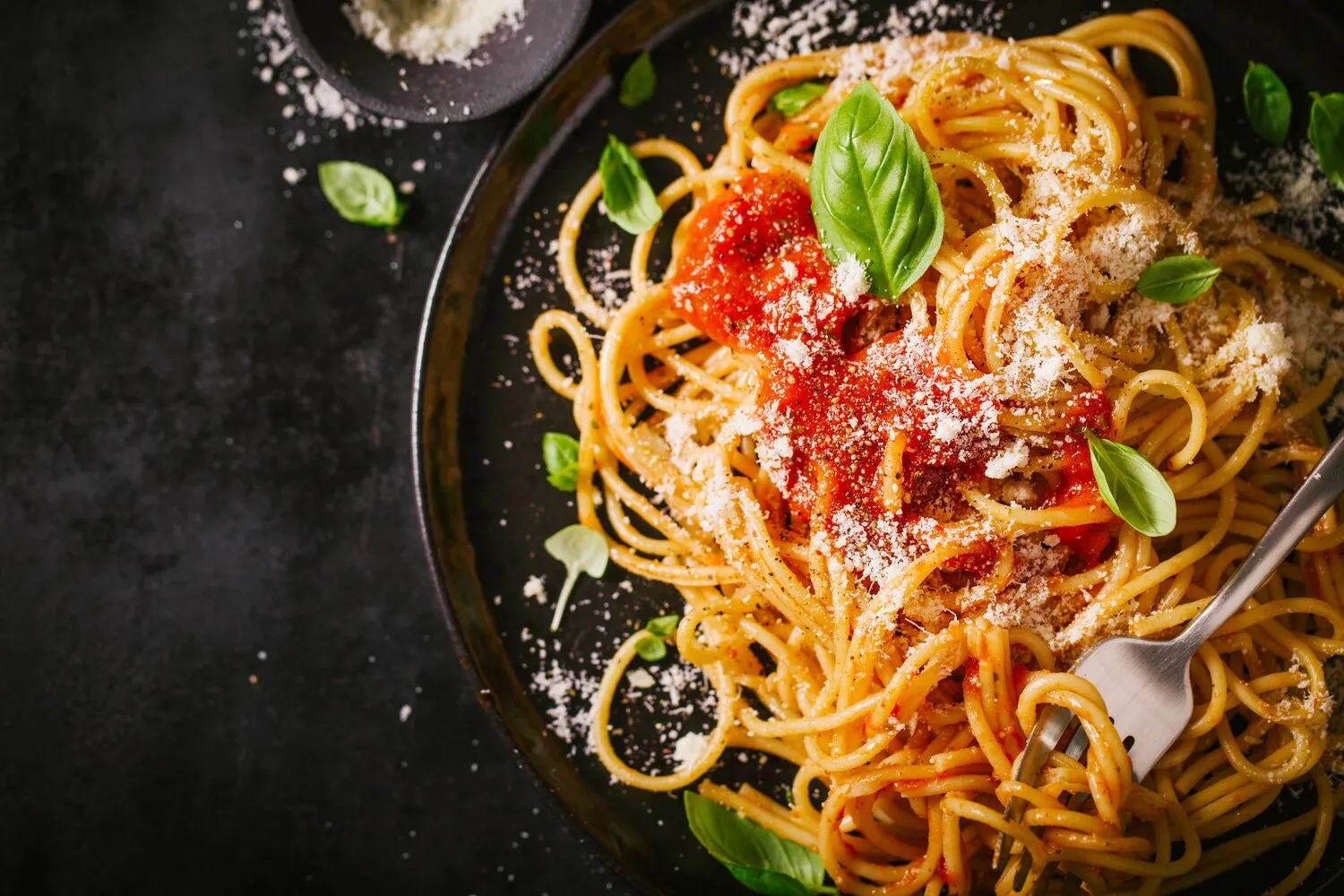
Pasta
Pasta is another common dish, as they are an italian restaurant.
Nutrition Facts
* The % Daily Value (DV) tells you how much a nutrient in a serving of food contributes to a daily diet. 2,000 calories a day is used for general nutrition advice.
Pasta's history is long and varied, with influences from ancient civilizations. While often attributed solely to Italy, evidence suggests early forms of noodles existed in other cultures, like China, long before they appeared in Italy. The modern Italian pasta we know today evolved over centuries, with advancements in wheat milling and pasta-making techniques, particularly during the Middle Ages and Renaissance. Dried pasta became widespread thanks to its ability to be stored for long periods, crucial for maritime travel and trade.
Pasta is a cornerstone of Italian culture, representing family, tradition, and regional diversity. It is more than just food; it's a social event, a symbol of national identity, and a source of pride.
Family Gatherings
Pasta is often served during large family gatherings, especially on Sundays and holidays. Sharing a meal of pasta is a way to connect and celebrate together.
Regional Variations
Each region in Italy boasts its own unique pasta shapes and sauces, reflecting local ingredients and culinary traditions. From the pesto of Liguria to the ragu of Bologna, the diversity is vast and represents the country's rich culinary heritage.
Pasta as a Symbol
Pasta is a symbol of Italian identity, recognized and enjoyed around the world. It represents the country's culinary creativity and its ability to transform simple ingredients into something extraordinary.
The flavors of pasta are incredibly diverse, depending entirely on the shape, sauce, and accompanying ingredients. Generally, it's a blank canvas that absorbs the flavors of the sauce.
The flavor profile of pasta is largely dependent on the accompanying sauce. Tomato-based sauces offer acidity and sweetness, while cream-based sauces provide richness and a velvety texture. Pesto brings herbaceousness and nutty notes, while olive oil and garlic offer a simple yet satisfying savory experience. The pasta itself, made from durum wheat, has a subtle, slightly nutty flavor. Ingredients like cheese, meat, vegetables, and seafood further contribute to the overall taste.
Salt the Pasta Water
Salting the pasta water is crucial for seasoning the pasta from the inside out. Add a generous amount of salt to the boiling water before adding the pasta.
Cook Pasta 'Al Dente'
'Al dente' means 'to the tooth' in Italian, and refers to pasta that is firm to the bite. Avoid overcooking the pasta, as it will become mushy.
Reserve Pasta Water
Before draining the pasta, reserve some of the starchy pasta water. This water can be added to the sauce to help it adhere to the pasta and create a creamy emulsion.
Sauce Immediately
Toss the cooked pasta with the sauce immediately after draining. This allows the pasta to absorb the flavors of the sauce while it is still hot.
Explore additional Italian dishes and restaurants
Explore ItalianDiscover top dining spots and culinary experiences in Hofstade.
Explore HofstadeLearn more about the food culture, restaurant scene, and culinary heritage of Belgium.
Explore Belgium
